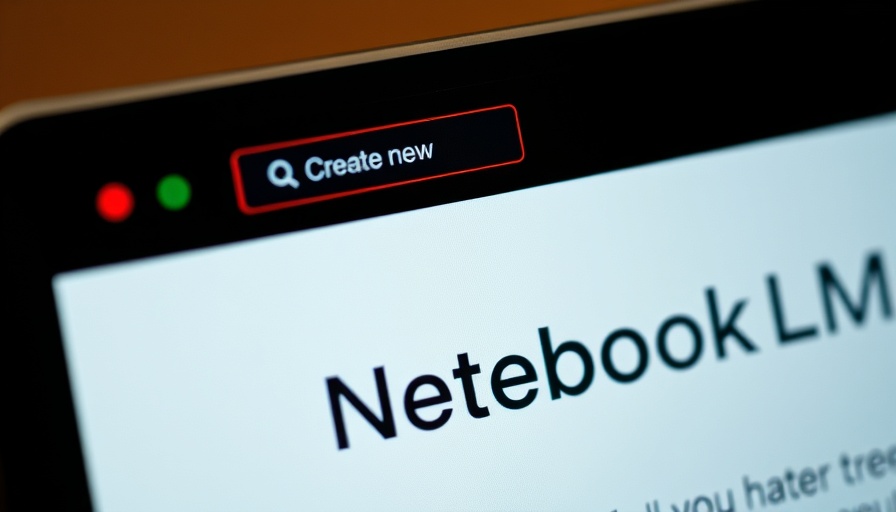
Unlocking a New Dimension: The Future of Note-Taking
In the fast-paced world of digital nomadism, where productivity tools must meet the needs of users on the go, Google’s NotebookLM is poised to offer an exciting advancement. Recently, TestingCatalog revealed that NotebookLM is set to introduce a Video Overviews feature that could transform how we engage with our notes. Not merely a fancy add-on, this capability is a game-changer, utilizing Google’s sophisticated video generation model, Veo 2, to create video summaries based on user notes. Imagine converting a lengthy set of notes into an engaging video recap—this capability could enhance learning and sharing, taking notes beyond static text.
Redefining Interaction through Video
NotebookLM’s forthcoming feature promises not only to summarize but actively visualize content, unlocking new avenues for understanding complex topics. While audio overviews can generate hour-long podcasts from notes, the introduction of video could incorporate visual metaphors and explanations. This richer interaction allows for a more nuanced presentation of information, which is especially beneficial for those who thrive on visual learning.
Bridging the Gap: From Notes to Community
The anticipated changes to the user interface of NotebookLM, alongside the Video Overviews, hint at a broader evolution in how we utilize note-taking applications. The inclusion of an 'Editor's Picks' section signals a move towards communal knowledge-sharing. This feature could facilitate the discovery of innovative perspectives and ideas, reminiscent of platforms like Perplexity. Digital nomads, in search of connection and synergy in their workflow, will find these enhancements invaluable.
Leveraging AI for Enhanced Productivity
The Video Overviews function is not just about multimedia flair; it’s rooted deeply in improving productivity for workers who juggle multiple duties. By transforming notes into video, users can process information more efficiently—this is particularly advantageous for nomads who may have limited time but high information demands. Moreover, the potential for personalized content discoveries further tailors the app's utility to individual preferences and needs.
What This Means for the Future of Note-Taking
In the landscape of digital tools, integrating video functionality may become the norm rather than the exception. As we look to the future, Google’s moves with NotebookLM challenge competitors to innovate or risk falling behind. The implications for productivity could be vast as creatives and professionals lean into more dynamic methods of compiling and sharing knowledge.
FAQs: Everything You Need to Know
1. How will the Video Overviews feature work?
NotebookLM will likely use prompts derived from your notes to generate comprehensive video summaries, enhanced by real-world physics and human interactions through Veo 2.
2. When will these features be available?
The mobile app release for iOS and Android, expected May 20, will coincide with Google I/O, a perfect stage for showcasing this innovative tool.
Take Charge of Your Productivity with NotebookLM
As the digital workspace evolves, embracing new tools like NotebookLM is essential. This app not only harnesses the power of AI but also humanizes the often solitary task of note-taking. With enhanced features on the horizon, now is the time to explore these new workflows, engage with their potential, and ultimately transform how you manage your digital knowledge.
 Add Row
Add Row  Add
Add 




Write A Comment